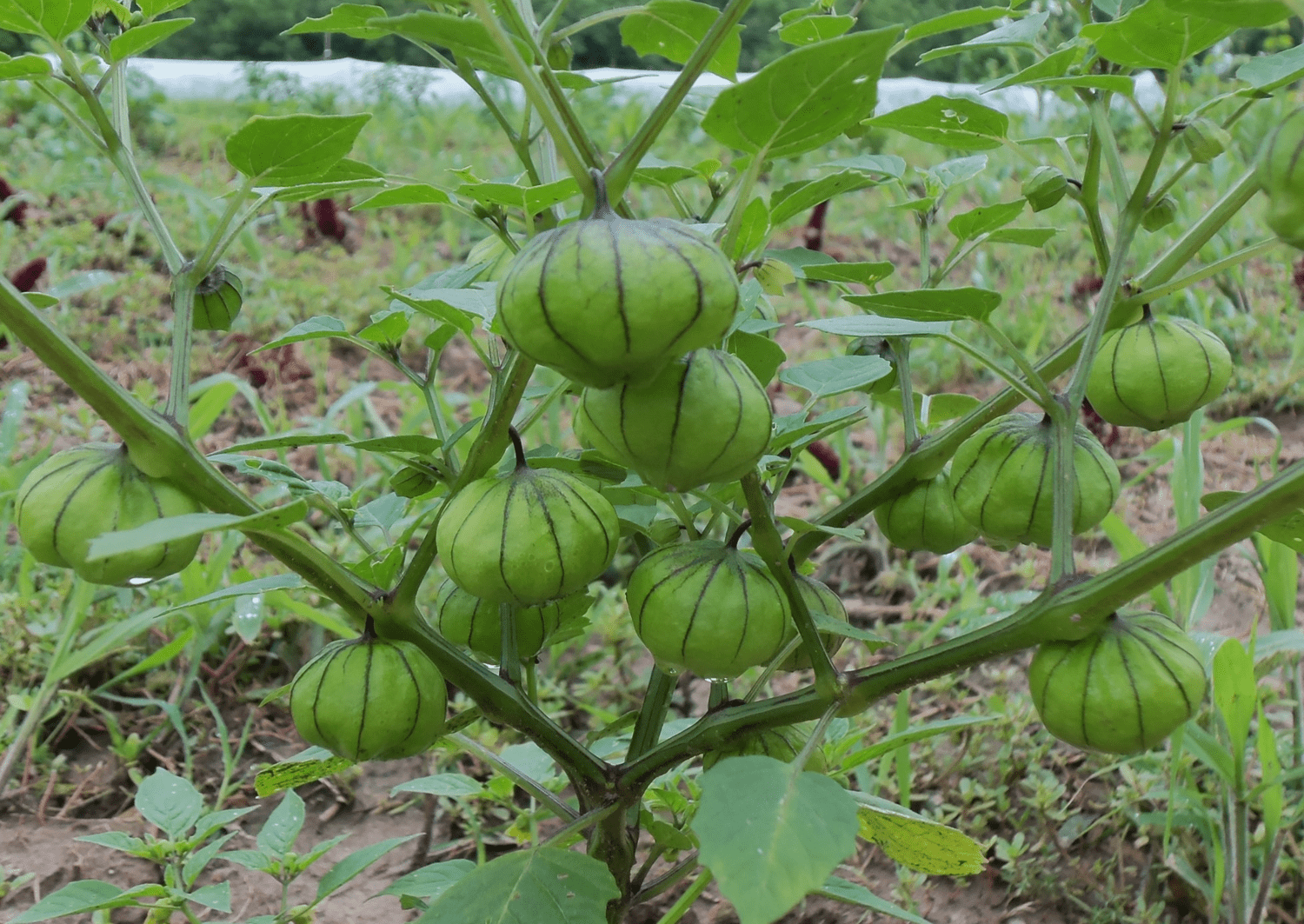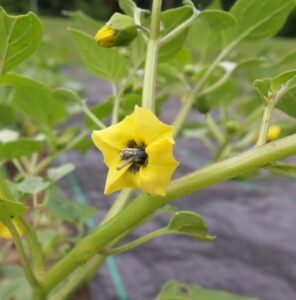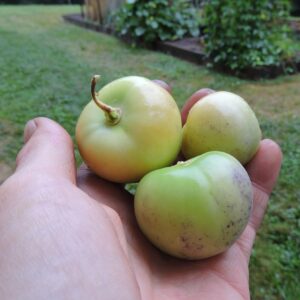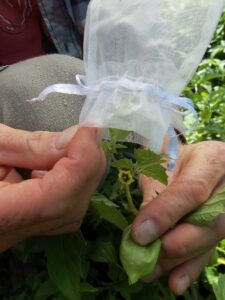When you make a purchase from Seed Savers Exchange, you help fulfill our nonprofit mission to protect our food and garden heritage. Do even more good by making a donation to help us preserve and share even more heirloom varieties!
Tomatillo Isolation Requirements

Tomatillo Isolation Requirements – Setting the Record Straight
Pollination

One of the most basic concepts of seed saving is that in order to ensure a variety remains true, two varieties of the same species must be isolated from one another. The proper isolation distance depends upon how the crop pollinates.
Cross-pollination occurs when pollen is delivered to a flower from a different plant of the same species. Self-pollination occurs when pollen from a flower pollinates itself or other flowers on the same plant.
Misunderstanding Tomatillos
One crop that is consistently misunderstood among seed savers is tomatillos. Tomatillos are outcrossers, meaning their flowers cross-pollinate and are incapable of self-pollination.
For example, one listed member in the 2013 Seed Savers Exchange Yearbook provides this description of ‘Cisineros’ tomatillo: “These were grown next to the 2 other varieties I’m listing – Everona and Giant Yellow. Tomatillos are considered self-pollinating and inbreeding.”

This is not an isolated case.
A quick Google search on seed-saving instructions yields similar misinformation regarding tomatillos. A publication from the University of Georgia entitled Specific Seed Saving Instructions for Common Vegetables states, “Tomatillos are self-pollinating and do not commonly cross.”
Even Suzanne Ashworth’s Seed to Seed considered the authoritative guide to seed saving for many years, states, “All of the species of Physalis are inbreeding plants and have flowers that are perfect and self-pollinating.”
Tomatillos Must Cross Pollinate

Unfortunately, this misinformation has resulted in many cross-pollinated tomatillo varieties, which we have encountered when we grow tomatillos for evaluation here at Heritage Farm.
In 2014, we conducted an experiment where we bagged the blossoms of tomatillos to see if they could self-pollinate. We discovered that tomatillos are, in fact, self-incompatible, meaning that their flowers cannot self-pollinate. In other words, tomatillos must cross-pollinate in order to set fruit, and they rely on insects to do so.
The most recent information on proper tomatillo isolation distances reflects this reality. In Seed Savers Exchange’s 2015 publication, The Seed Garden, the recommendations for distance isolation are 800 feet to half a mile. And if genetic preservation of a variety is the goal, “the isolation distance should be increased to 1-2 miles.” This is a significant departure from most seed-saving resources on tomatillos!
So, if you have a favorite tomatillo variety for turning into salsa verde and want to save seeds, make sure you give it plenty of space from other varieties!
Originally posted October 26, 2015. Edited January 23, 2025.